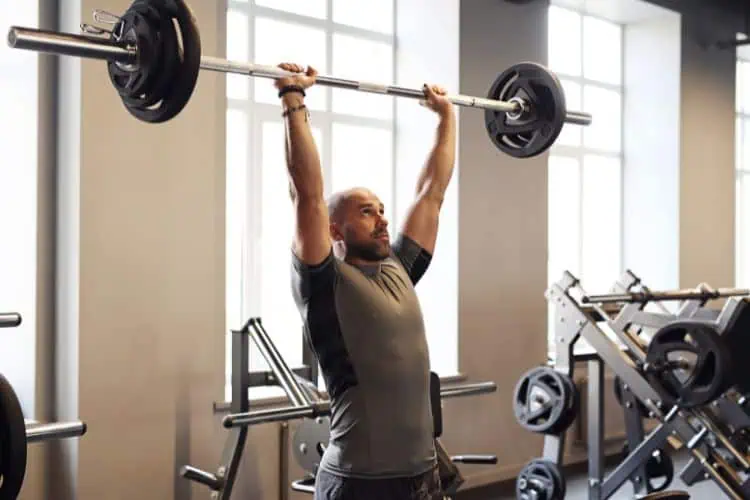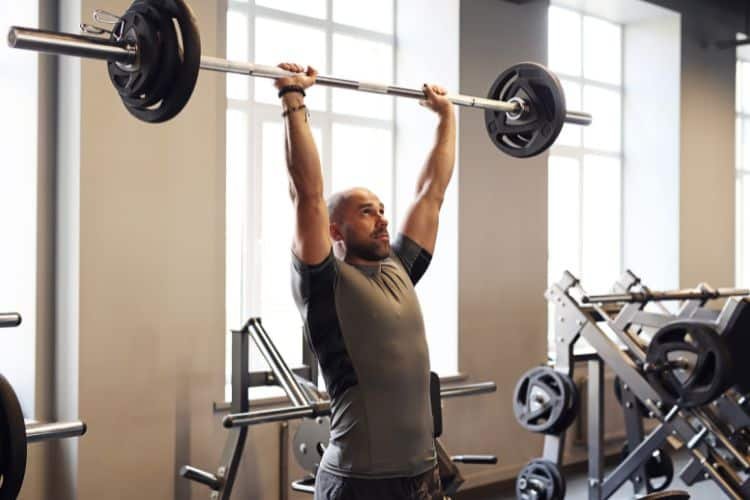
Starting your fitness journey can be overwhelming with so many exercises and workout programs available. However, focusing on a full-body gym workout is a great approach for beginners. It allows you to target multiple muscle groups in a single session, helps you build strength, and improves overall fitness. This blog post will outline an effective full-body workout routine, explain each exercise, and offer tips for progression to help you achieve your fitness goals.
Why Choose a Full-Body Workout?
Before diving into the exercises, it’s essential to understand why a full-body workout is beneficial for beginners:
Benefits of Full-Body Workouts
- Efficiency: Full-body workouts target several muscle groups in one session, making it a time-efficient way to exercise. This is ideal for beginners who want to maximize their time at the gym.
- Balanced Strength Development: By working all major muscle groups, you ensure balanced development, reducing the risk of muscle imbalances that could lead to injury.
- Faster Fat Loss: Working multiple muscles at once burns more calories, which can help accelerate fat loss when combined with a proper diet.
- Improved Muscle Coordination: Full-body workouts emphasize functional movements that require muscle coordination, leading to better overall strength and stability.
Now, let’s look at the ideal structure of a full-body gym workout for beginners.
The Ideal Full-Body Gym Workout for Beginners
This beginner-friendly workout plan consists of exercises that target major muscle groups, including the chest, back, legs, shoulders, and core. The workout can be completed two to three times per week, with at least one rest day between sessions to allow for recovery.
Warm-Up
Before you begin any workout, warming up is crucial to prevent injury and improve performance. Spend 5-10 minutes doing light cardio, such as walking on a treadmill or using a stationary bike. This will get your blood flowing and prepare your muscles for the workout ahead.
Example Warm-Up Routine:
- 5 minutes on a stationary bike or treadmill (light pace)
- 10 bodyweight squats
- 10 arm circles (each direction)
- 10 shoulder rolls
Once your body is warmed up, you’re ready to begin the full-body workout.
The Full-Body Beginner Workout Routine
1. Squats (Legs and Glutes)
Muscles Worked: Quadriceps, hamstrings, glutes, core
Squats are one of the best exercises for building lower body strength. They target the muscles in your legs and glutes while engaging your core for stability.
How to Perform:
- Stand with your feet shoulder-width apart and your toes pointing slightly outward.
- Hold a barbell across your upper back or use a pair of dumbbells by your sides.
- Keeping your chest up and your back straight, lower your body by bending your knees and hips, as if sitting back into a chair.
- Go as low as you can while maintaining good form, ideally until your thighs are parallel to the ground.
- Push through your heels to return to the starting position.
Reps and Sets: 3 sets of 10-12 reps
2. Bench Press (Chest, Shoulders, and Triceps) Full Body Gym Workout
Muscles Worked: Chest (pectorals), shoulders (deltoids), triceps
The bench press is a foundational exercise for building upper body strength. It primarily targets the chest while also working the shoulders and triceps.
How to Perform:
- Lie flat on a bench with your feet planted firmly on the floor.
- Grip the barbell slightly wider than shoulder-width apart.
- Lower the bar slowly to your chest, keeping your elbows at about a 45-degree angle to your body.
- Press the bar back up to the starting position by fully extending your arms.
Reps and Sets: 3 sets of 8-10 reps
3. Lat Pulldown (Back and Biceps)
Muscles Worked: Latissimus dorsi (lats), biceps, rear deltoids
The lat pulldown targets the muscles in your back, especially the lats, and helps develop pulling strength, which is essential for building an athletic physique.
How to Perform:
- Sit at a lat pulldown machine and grasp the bar with a wide, overhand grip.
- Pull the bar down toward your upper chest, focusing on squeezing your shoulder blades together.
- Slowly return the bar to the starting position with control.
Reps and Sets: 3 sets of 10-12 reps
4. Deadlift (Full Body Gym Workout, Focus on Legs and Back)
Muscles Worked: Hamstrings, glutes, lower back, core
The deadlift is a fantastic exercise for building strength across the entire body. It primarily targets the posterior chain (hamstrings, glutes, and lower back), but also engages the core and upper body.
How to Perform:
- Stand with your feet hip-width apart, with a barbell on the floor in front of you.
- Bend at the hips and knees to grip the bar just outside your knees, keeping your back straight.
- Drive through your heels to stand up, lifting the bar while keeping it close to your body.
- Fully extend your hips and knees at the top, standing tall before lowering the bar back down with control.
Reps and Sets: 3 sets of 8 reps
5. Dumbbell Shoulder Press (Shoulders and Triceps)
Muscles Worked: Shoulders (deltoids), triceps
The dumbbell shoulder press strengthens the shoulders and triceps, helping improve upper body strength and posture.
How to Perform:
- Sit on a bench with back support, holding a dumbbell in each hand at shoulder height.
- Press the weights overhead, fully extending your arms.
- Lower the dumbbells back to the starting position in a controlled manner.
Reps and Sets: 3 sets of 10-12 reps
6. Plank (Core) Full Body Gym Workout
Muscles Worked: Core (abs, obliques, lower back)
The plank is a simple yet highly effective exercise for building core strength and stability.
How to Perform:
- Start in a push-up position, but with your weight resting on your forearms instead of your hands.
- Keep your body in a straight line from head to heels, engaging your core muscles.
- Hold this position for as long as possible, aiming for at least 30 seconds.
Reps and Sets: 3 sets of 30-60 seconds
7. Leg Press (Legs and Glutes)
Muscles Worked: Quadriceps, hamstrings, glutes
The leg press is a machine-based exercise that allows you to safely target the muscles of your lower body without putting excessive strain on your lower back.
How to Perform:
- Sit on the leg press machine with your feet shoulder-width apart on the platform.
- Push the platform away from you by extending your knees, but don’t fully lock out your legs.
- Slowly lower the platform back down until your knees are at about a 90-degree angle.
Reps and Sets: 3 sets of 10-12 reps
8. Seated Row (Back and Biceps) Full Body Gym Workout
Muscles Worked: Back (lats, rhomboids), biceps, forearms
The seated row is a machine-based exercise that targets the back muscles, improving posture and pulling strength.
How to Perform:
- Sit at the rowing machine and grasp the handles with a neutral grip.
- Pull the handles toward your torso, keeping your back straight and squeezing your shoulder blades together.
- Slowly return to the starting position with control.
Reps and Sets: 3 sets of 10-12 reps
Cool Down and Stretching
After completing your full-body workout, it’s important to cool down and stretch. This will help reduce muscle soreness and improve flexibility.
Example Cool Down Routine:
- 5 minutes of light walking or cycling
- Stretch each major muscle group, holding each stretch for at least 20-30 seconds.
Key Stretches to Include:
- Hamstring stretch
- Quadriceps stretch
- Shoulder stretch
- Chest stretch
- Lower back stretch
Progression for Beginners Full Body Gym Workout
To continue making progress, it’s essential to gradually increase the difficulty of your workouts. This can be done by:
1. Increasing Weight
Once you can complete the upper end of the rep range with good form, increase the weight slightly. For example, if you’re able to do 12 reps of squats comfortably, add 5-10 pounds to your next set.
2. Increasing Reps and Sets
If increasing the weight feels too challenging, try adding an extra set or a few more reps to each exercise. Gradually pushing your limits will lead to steady improvements in strength and fitness.
3. Varying Exercises
Over time, it’s beneficial to introduce variations of the core exercises in your routine. For example, you can switch from dumbbell shoulder presses to barbell overhead presses or incorporate lunges instead of leg presses. This prevents your body from adapting to the same movements and encourages continuous progress.
Common Mistakes to Avoid
As a beginner, it’s essential to avoid these common mistakes to ensure that your full-body workouts are safe and effective:
- Lifting Too Much Weight Too Soon: Start with lighter weights and gradually increase them to avoid injury.
- Neglecting Proper Form: Focus on performing each exercise with good form rather than lifting heavy weights. Poor form can lead to injury and prevent you from targeting the right muscles.
- Skipping Warm-Ups and Cool-Downs: Always warm up before your workout and cool down afterward to prevent injury and improve recovery.
Not Resting Between Workouts: Full-body workouts are demanding, so it’s essential to allow your muscles time to recover. Aim for at least one rest day between sessions.
A full-body gym workout is an excellent way for beginners to build a strong foundation of fitness. By targeting multiple muscle groups in each session, you’ll see improvements in strength, endurance, and overall body composition. Remember to focus on proper form, gradually increase the intensity, and allow for adequate recovery between workouts. With consistency and effort, you’ll be well on your way to achieving your fitness goals.
